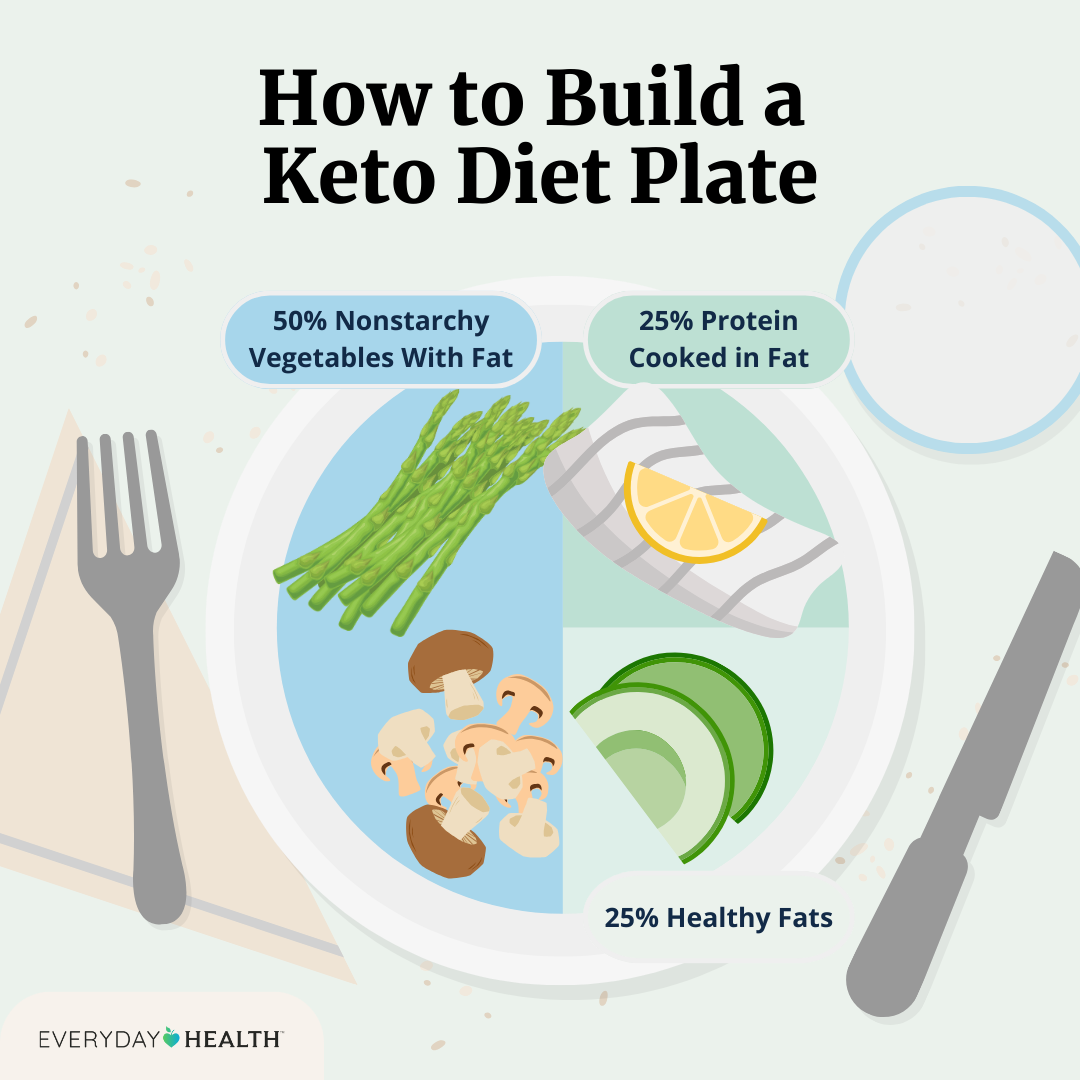Are you looking for a way to shed those extra pounds without starving yourself or counting every calorie? The keto diet might be the answer you’ve been searching for.
But what exactly is the keto diet for weight loss, and how can it help you reach your goals faster? You’ll discover how this popular eating plan works, why it’s different from other diets, and how it can transform your body by tapping into your natural fat-burning powers.
Keep reading, because understanding the keto diet could be the key to unlocking a healthier, slimmer you.
Keto Diet Basics
The keto diet is a way of eating that focuses on low carbs and high fat. It helps the body burn fat for energy instead of sugar.
This diet has become popular for weight loss and improving overall health. It changes how your body uses fuel.
What Is The Keto Diet
The keto diet is short for ketogenic diet. It lowers carbohydrate intake and raises fat intake. This puts your body into a state called ketosis.
In ketosis, your body burns fat instead of carbs for energy. This can help reduce body fat and improve energy levels.
How Keto Affects Weight Loss
When your body is in ketosis, it burns stored fat for fuel. This helps reduce fat and leads to weight loss.
The keto diet also helps control hunger by reducing blood sugar swings. This means you may eat less without feeling hungry.
Key Macronutrients In Keto
The keto diet focuses on three main macronutrients: fats, proteins, and carbohydrates. The balance between these is important.
- Fats:70-80% of daily calories come from fats like oils, nuts, and avocados.
- Proteins:15-25% of calories come from proteins such as meat, fish, and eggs.
- Carbohydrates:Only 5-10% of calories come from carbs, mainly from vegetables and some nuts.
Starting The Keto Journey
The keto diet is a low-carb, high-fat way to lose weight. It helps your body burn fat for energy instead of sugar.
Starting the keto journey means changing your eating habits. This guide will help you begin with the right steps.
Choosing Keto-friendly Foods
Pick foods that are low in carbs and high in fat. This keeps your body in a fat-burning state called ketosis.
Focus on natural, whole foods to stay healthy while on keto.
- Meat: beef, pork, chicken
- Fish and seafood: salmon, shrimp
- Healthy fats: olive oil, avocado, butter
- Low-carb vegetables: spinach, broccoli, cauliflower
- Nuts and seeds: almonds, chia seeds
Setting Realistic Goals
Set small, clear goals to track your progress. This helps you stay motivated and avoid frustration.
Focus on healthy weight loss and improved energy instead of quick results.
- Decide how many pounds to lose each week
- Plan your meals in advance
- Track your daily carb intake
- Check your energy levels regularly
Common Mistakes To Avoid
Some mistakes can slow your progress or cause discomfort. Learn what to avoid on keto.
Keep your focus on steady habits and listen to your body.
- Eating too many carbs by mistake
- Not drinking enough water
- Ignoring electrolyte balance
- Expecting fast results too soon
- Skipping healthy fats to cut calories
Meal Planning And Recipes
The keto diet helps many people lose weight by eating low carbs and more fats. Planning your meals is key to staying on track.
Good meal plans include balanced recipes that are easy to make and keep you full longer.
Simple Keto Meal Ideas
Start with meals that have healthy fats, protein, and very few carbs. Eggs, meats, and leafy greens work well.
- Omelet with spinach and cheese
- Grilled chicken with avocado salad
- Salmon cooked in olive oil with broccoli
- Zucchini noodles with pesto and shrimp
- Beef stir-fry with low-carb vegetables
Snacks And Desserts
Keto snacks and desserts keep hunger away without adding many carbs. Nuts and cheese are good options.
Sweet treats can include berries or sugar-free options made with almond flour.
- Mixed nuts and seeds
- Cheese slices or cubes
- Celery sticks with cream cheese
- Keto fat bombs made with coconut oil
- Chia seed pudding with almond milk
- Almond flour brownies
Meal Prep Tips
Preparing meals ahead saves time and helps you stick to keto. Cook proteins and veggies in batches.
Use containers to portion meals for the week. Label them by day or meal type to stay organized.
- Cook large amounts of meat or eggs at once
- Chop vegetables and store in airtight containers
- Make keto sauces or dressings in advance
- Use freezer bags for easy meal storage
- Plan simple recipes to reduce cooking time

Tracking Progress
Tracking your progress is important on the keto diet. It helps you see if the diet is working and guides your next steps.
By measuring ketosis, monitoring changes, and adjusting your diet, you can stay on the right path toward weight loss.
Measuring Ketosis
Ketosis means your body burns fat for energy. Measuring ketosis shows if you are in this fat-burning state.
You can measure ketosis using urine strips, blood meters, or breath analyzers. Each method shows ketone levels differently.
- Urine strips are easy and cheap but less accurate over time.
- Blood meters give precise ketone readings but cost more.
- Breath analyzers are reusable and measure acetone levels.
Monitoring Weight And Body Changes
Tracking your weight regularly helps you see your progress on the keto diet. Use the same scale and time for best results.
Besides weight, check body measurements and how your clothes fit. These show fat loss even if the scale does not change much.
- Weigh yourself once a week at the same time.
- Measure waist, hips, and chest every two weeks.
- Notice how your clothes feel for signs of fat loss.
Adjusting The Diet
If your progress slows, adjusting your keto diet may help. Change your fat, protein, or carb intake to fit your body’s needs.
Keep track of foods and portions. Small changes can improve weight loss and keep you in ketosis.
- Lower carbs if you are not in ketosis.
- Adjust protein if you feel very hungry or lose muscle.
- Change fat intake if energy feels low or weight loss stalls.
Managing Challenges
The keto diet can be tough at times. People face different challenges while trying to lose weight with keto.
Knowing how to handle these problems helps keep you on track and reach your goals.
Handling Keto Flu
Keto flu is a group of symptoms some people get in the first days of keto. It feels like mild flu with headaches and tiredness.
It happens because your body adjusts to using fat instead of carbs for energy.
- Drink plenty of water to stay hydrated
- Eat enough salt to balance electrolytes
- Rest well and avoid heavy exercise
- Eat small meals often to keep energy up
Dealing With Plateaus
Sometimes, weight loss slows down or stops. This is called a plateau and it can be frustrating.
Plateaus happen when your body adapts to your new diet and routine.
- Check your portion sizes and food quality
- Try adding more physical activity
- Vary your meals to avoid boredom
- Be patient, plateaus often pass with time
Social Situations And Eating Out
Eating keto while socializing can be hard. Many meals outside have carbs and sugars.
Planning ahead helps you enjoy meals without breaking keto rules.
- Look at menus before going out to choose keto options
- Ask for substitutions like extra veggies instead of bread
- Bring keto-friendly snacks to parties or events
- Drink water or unsweetened drinks instead of sugary ones
Long-term Success
The keto diet can help with weight loss by lowering carbs and increasing fats. Long-term success means keeping the weight off for good.
Staying on keto takes habits that fit your life. Planning and balance help keep results steady.
Maintaining Results
After losing weight, keep eating healthy fats and moderate protein. Avoid going back to old high-carb habits.
Track your food and weight regularly. This helps catch small changes before they grow.
- Eat whole, unprocessed foods
- Limit sugar and grains
- Stay consistent with meal times
- Drink plenty of water
Incorporating Exercise
Exercise supports weight loss and health. It helps keep muscle and burns extra calories.
Choose activities you enjoy. This makes it easier to stay active long term.
- Try walking or jogging daily
- Include strength training twice a week
- Stretch to improve flexibility
- Use exercise as a way to reduce stress
Balancing Keto With Lifestyle
Adjust keto to fit your social life and work. Flexibility helps you keep the diet without stress.
Plan meals ahead and find keto-friendly options when eating out. Small changes add up to big results.
- Prepare snacks to avoid unhealthy choices
- Communicate your diet needs with friends
- Allow occasional treats in small amounts
- Focus on progress, not perfection

Frequently Asked Questions
What Is The Keto Diet For Weight Loss?
The keto diet is a low-carb, high-fat eating plan. It forces the body to burn fat for energy instead of carbs. This process helps reduce body fat and promotes weight loss effectively.
How Does Keto Diet Promote Fat Burning?
By limiting carbs, the body enters ketosis. In ketosis, it burns fat for fuel instead of glucose. This boosts fat loss and helps reduce overall body weight.
What Foods Are Allowed On A Keto Diet?
Keto-friendly foods include meat, fish, eggs, dairy, nuts, seeds, and low-carb vegetables. Avoid sugary foods, grains, and high-carb fruits for effective results.
Is The Keto Diet Safe For Everyone?
The keto diet is generally safe but not for everyone. People with certain medical conditions should consult a doctor before starting it.
Conclusion
The keto diet can help with weight loss. It’s about eating low carbs. Focus on high-fat foods like avocado and nuts. Your body burns fat for energy. This process is called ketosis. Some people see quick results. Others take longer.
Everyone’s body is different. It’s important to listen to your body. Stay hydrated and watch your health. Talk to a doctor before starting. Keto isn’t just a diet. It’s a lifestyle change. Remember, balance is key. Enjoy your journey to better health.



